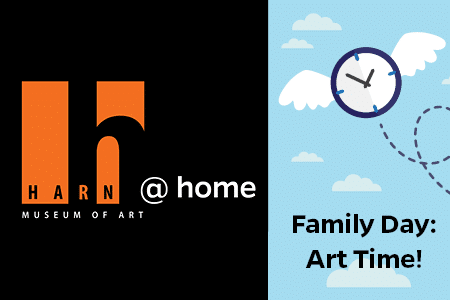Celebrate Earth Day on April 22 and Arbor Day on April 30 with the Harn Museum of Art! Earth Day is a yearly event that celebrates supporting the environment through conservation efforts. Arbor Day is an annual holiday that celebrates the importance of trees in keeping the planet healthy. Drawing inspiration from the exhibition A Florida Legacy, discover how you can lend a hand in protecting the land and trees through a landscape painting activity you can do with your fingers!
Definitions
- Conservation: the protection and preservation of nature and the planet.
- Landscape painting: an artwork showing a scene in nature that often includes a natural or wild area of land, sky, water, plants and animals.
Let’s Learn About Landscapes!
Artists in the exhibition A Florida Legacy were inspired by nature found in different Florida landscapes, such as beaches, lakes and swamps. What makes up a landscape? Landscapes often include the sky, water, land, plants and animals. Landscape paintings use color, shape and line to create pictures of things found in nature. Let’s look at a few landscape paintings to find color, shape and line!
What do you see? I see…
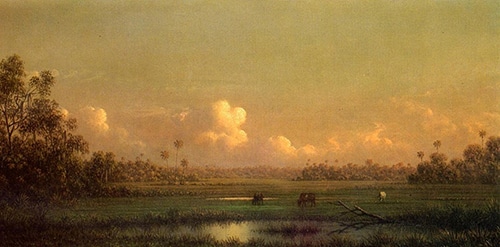
I see color in the pink sky, blue lake and brown cows!
I see lines in the long, thin lines of the tree trunk and in the small, short line in the grass!
I see shape in the big circles for the clouds!
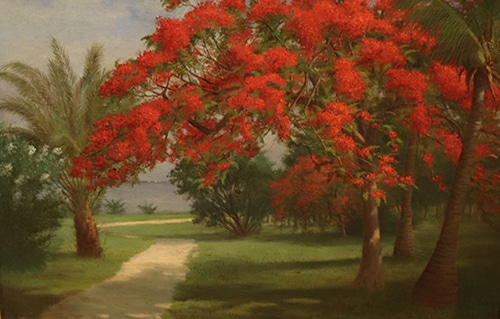
I see color in the blue sky, green grass and red flowers.
I see lines in the long, wide line of the walkway and in the long, thin line of the tree trunk.
I see shape in the small circles for the red flowers!
Now you try! What colors, lines and shapes do you see in these artworks?
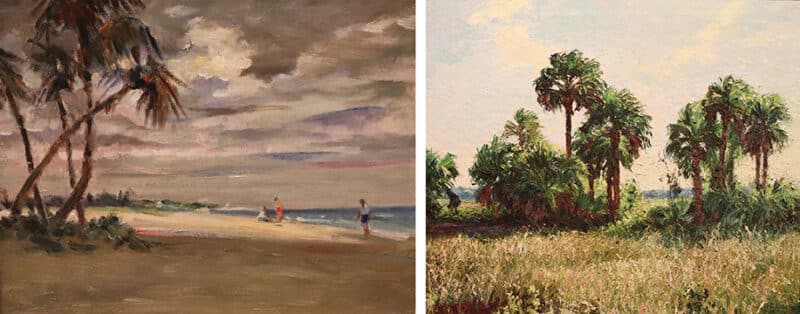
Let’s Make a Landscape Painting!
What You’ll Need
- Protective cover for your painting surface, such as newspaper or cardboard.
- Apron or old t-shirt to keep clothes paint free
- Tempera or acrylic paint (Washable, Non-Toxic)
- Paintbrushes
- Water cup
- Paper
- Wipes, paper towels and other clean up supplies
What You’ll Do
1. Cover your art-making surface. This will help with clean-up since finger painting can get messy!
2. Think about different landscapes and areas in nature you enjoy visiting. Is there land or water in these landscapes? What kinds of plants and animals live there? Decide which type of landscape you would like to create and select paint colors to represent it.
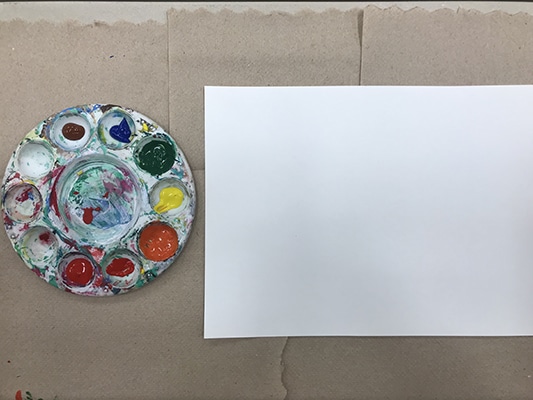
3. Start with the sky. Paint your hands the color of the sky, then play with hand painting techniques to cover the whole page. Try stamping, squiggling, streaking or splattering your hand to the paper!
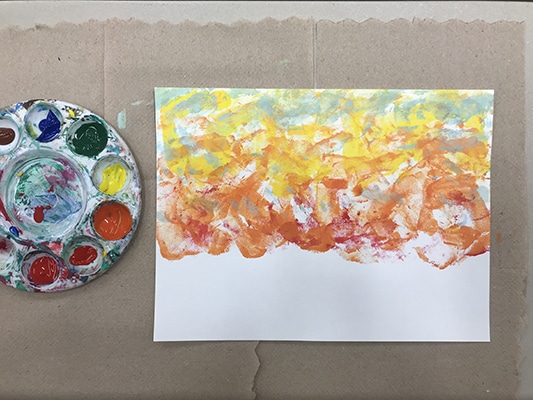
4. Add water to your landscape. Use your fingers and a new paint color to add a river, lake, ocean or pond to your landscape.
a. Suggested Technique: Use your finger to create swirling lines to make waves.
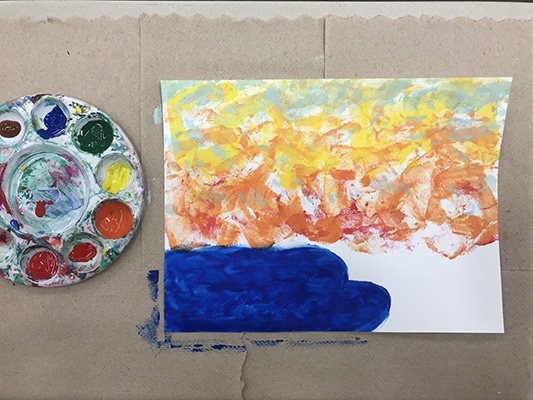
5. Add land to your landscape. Use your fingers and a new paint color to add an island, prairie, seashore or forest to your landscape.
a. Suggested Technique: If you want to add sand to your landscape, try tapping your painted fingers to the paper to create a series of small circles. If you want to add grass to your landscape, try using your fingers to paint straight lines. Tap a painted finger to the end of the straight line to create a flower.

6. Now, add some trees to your painting.
a. Suggested Technique: Paint the side of your hand and pinky finger, then stamp it on the page to make the tree trunk. If you want to create a palm tree, try using your fingers to create squiggly lines to make long leaves. If you want to create an oak tree, try tapping your painted fingers to the paper to make small leaves.
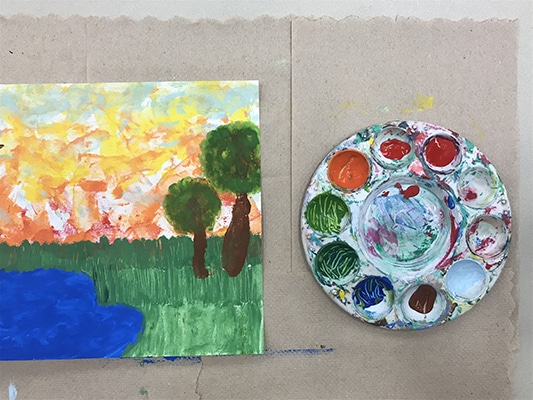
7. Lastly, add some animals to your painting.
a. Suggested Technique: Use your pointer finger as a paintbrush to paint animals you’d find in your landscape.
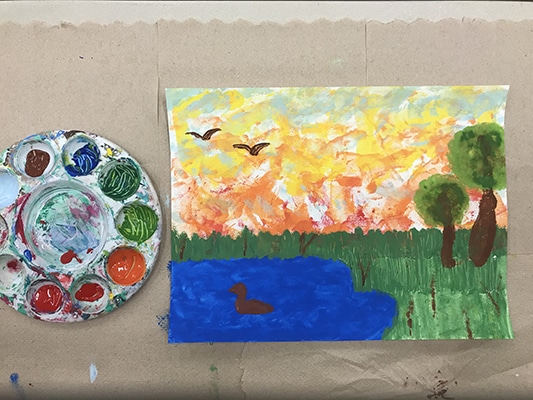
8. Repeat Steps 1 – 7 to create a series of landscape paintings!

Tips & Tricks
Keep wet wipes or a damp paper towel close by to wipe down fingers in between paint colors.
Resources
- How finger painting helps your tot to explore sensory integration and develop strength and dexterity:
- Ways you can lend a hand to conservation efforts:
Object Connections

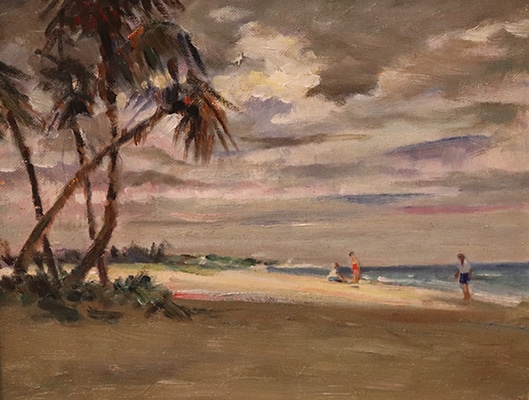

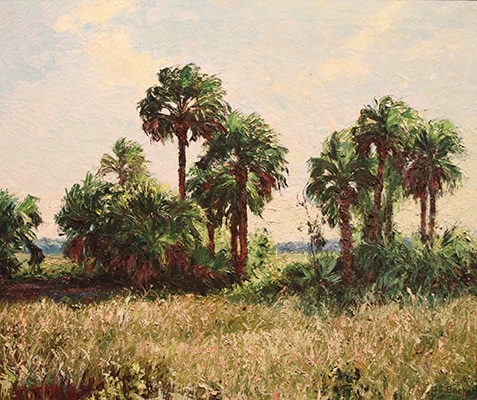
Lesson Plan by Briana Rosa, Family Programs Intern and 2nd-year Education Sciences Student in UF’s College of Education.

